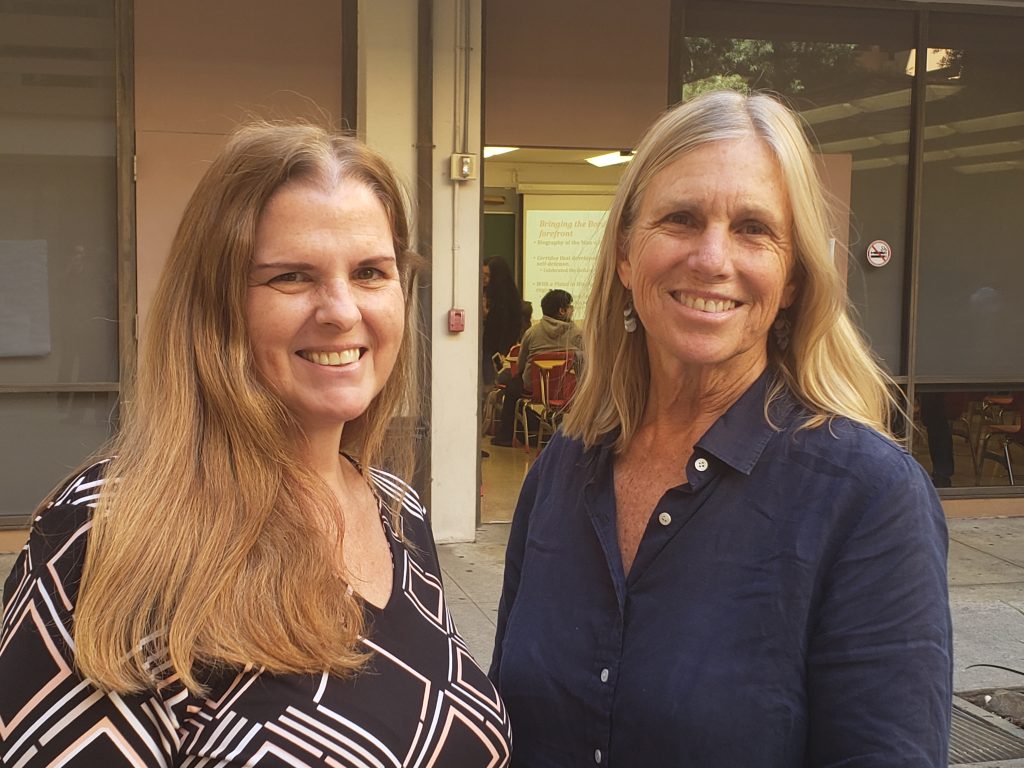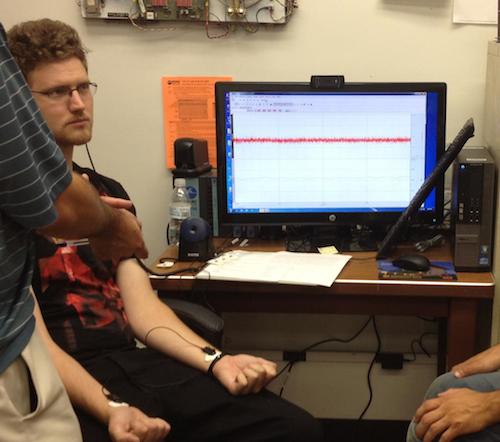
Before they cleaned out and refurbished Room B-241A in the Social and Behavioral Sciences building, faculty and students conducting research in the field of cognitive psychology met wherever they could: in crowded faculty offices or random conference rooms.
Not anymore. In December of 2008, they hosted a grand opening for the George Marsh Applied Cognition Laboratory, in memory of the professor who taught cognitive psychology at California State University, Dominguez Hills for more than 30 years. He passed away in 2004.
“George Marsh was extremely influential in the early days of the psychology department. He was also just a really good guy, willing to talk to anyone about cognitive research,” said Larry Rosen, psychology professor emeritus and a founder of the lab along with communications professor Nancy Cheever and fellow psychology professor Mark Carrier. “Naming this lab after him just made sense.”
For the past few years, Rosen, Carrier and Cheever had been collaborating on various research projects in the area of applied cognitive psychology, a branch that focuses on information processing, including thinking, reasoning, decision making and other mental processes, and their application in the real world. They always involve undergraduate and graduate students and encourage them to conduct their own studies. But finding ways to physically work together had been a problem. Recently the lab added Professor Thomas Norman of the School of Business as a fourth mentor.
Room B-241A was unused and proved to be what they needed, but the space was filled with a large soundproof anechoic chamber and other unwanted equipment. The professors found a new home for the chamber (at CSU Bakersfield), and pooled departmental resources – specifically funds the dean’s office provides to professors for teaching large classes– to purchase computers and furniture and make “tenant improvements.”
Rosen said he, Carrier and Cheever willingly invested their time and energy in the lab because they saw the benefits.

“I think it’s important to have one location, a place everybody can go and know they will have someone to talk to [about their research],” Rosen said. “It creates a real sense of community.”
Julie Felt (Class of ’06, B.A., psychology), an interdisciplinary studies M.A. graduate focusing on biopsychosocial research, said on any given day at the lab students are working on their laptops or at one of the lab’s computers or huddled together with a professor looking at stats or exchanging ideas.
“I’m so happy to have this lab because it has made it so everyone doing this kind of research has one place to go,” said Felt, who also is an alumna of CSUDH (B.A, psychology, 2006). “We can’t stop the ideas flowing. I think what takes place here in the lab is synergistic.”
Felt used the lab to work on a research project looking at the health effects of prolonged media usage in children 6 to 12 years. Surveying 380 parents and children representing a cross-section of the population in Southern California, the study found that “media use was predictive of a child’s wellbeing,” she said. “The more media use the more psychological problems, the lower self-esteem, and increased health problems. There was also a negative correlation with healthy eating.”
Felt presented the results of the study at the Southern California Conference for Undergraduate Research at Cal Poly Pomona and published the paper along with three mentors and several GMAC members in 2014.
Felt’s research project is a prime example of the kind of collaborative faculty-student work conducted in the new lab. Other research taking place in the lab involves studies on multitasking across generations, the impact of text messaging on English literacy, what youth are doing on social media and how it affects them, how bilingualism interacts with communication technology and the relationship between religiosity and media use.
“Every time we do a study, students pick a part,” Rosen said, adding that their participation often leads to conference presentations. “We want to get them excited about doing research. That’s one of the important things we do here is excite students about doing research.”
Charles Hohm, a prior dean of the College of Natural and Behavioral Sciences, commended the faculty for providing a space that fosters such educational benefits.
“Their students are so involved and very successful at getting into doctoral programs all over the country, and this is where it starts,” Hohm said.
Marsh’s widow, Jean McEwen (Class of ’80, B.A., psychology), attended the opening celebration and said having the lab named after her husband was an honor.
“It’s wonderful. He really would have loved this, to have a lab like this to work in,” said McEwen, who worked in Academic Affairs for a number of years. “To have it named after him is a real tribute.”
Eleven students currently use the George Marsh Applied Cognition Lab, at the invitation of faculty. They range from sophomores to graduate level.
– Amy Bentley-Smith





